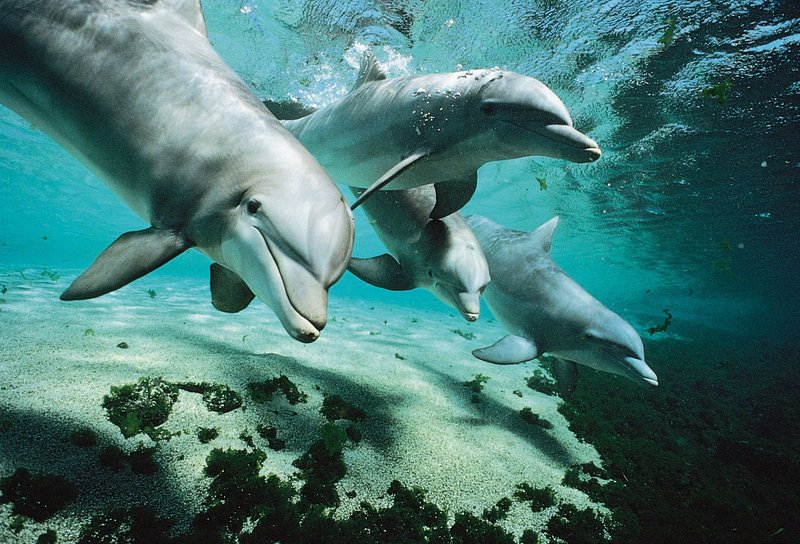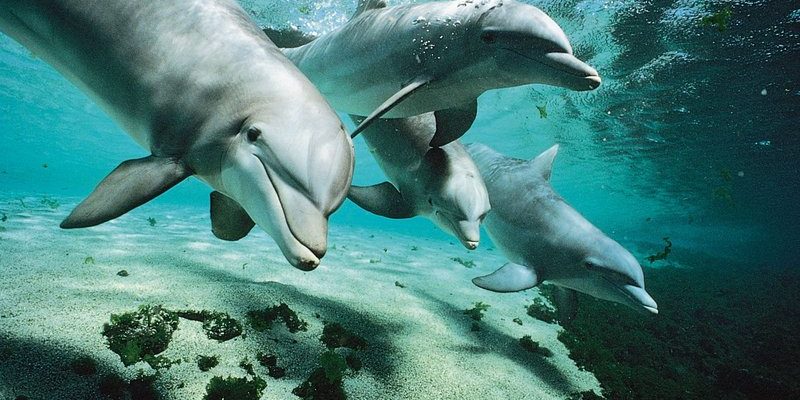
Imagine evolution as a slow, intricate dance. Throughout millions of years, bottlenose dolphins have perfected their moves, adapting to life in the water and overcoming various challenges. From their early ancestors to the sophisticated beings they are now, the evolutionary journey of these dolphins is not just about survival; it’s about thriving in a world that’s constantly changing.
So, let’s dive into this captivating story and explore the evolutionary path of the bottlenose dolphin, uncovering the traits that make them the amazing animals they are today.
Early Ancestors: A Journey Back in Time
To understand how the bottlenose dolphin evolved, we have to look back millions of years. The ancestors of modern dolphins were actually land mammals! Around 50 million years ago, their great-great-great-grandparents were hoofed creatures, similar to today’s hippos. These animals made a bold move from land to water, driven by the search for food and a safer environment.
Once in the water, these early beings underwent significant changes. Their limbs evolved into flippers, and their bodies became streamlined, allowing them to glide efficiently through the ocean. Imagine the transition as a daring leap into a new world—a world filled with adventures and challenges, but also dangers lurking in the deep.
As time went on, these ancestors diversified into various species of dolphins and whales. The bottlenose dolphin, specifically, emerged around 15 million years ago, showcasing remarkable adaptability. They developed larger brains and sophisticated echolocation abilities, making them some of the smartest creatures in the ocean.
Physical Adaptations: What Makes Bottlenose Dolphins Unique
One thing that stands out about the bottlenose dolphin is its incredible physical adaptations. Their bodies are built for speed and agility, allowing them to swim gracefully through the water. With a streamlined shape, these dolphins can reach impressive speeds of up to 20 miles per hour when necessary.
Let’s talk about their skin. It’s smooth and often a shade of gray, helping them blend into the ocean’s depths. But here’s a fun fact: the skin of bottlenose dolphins is not just for looks. It has a special layer of blubber that provides insulation, keeping them warm in cooler waters. This blubber also acts as an energy reserve, which is crucial when food is scarce.
Another remarkable trait is their echolocation. Bottlenose dolphins have a system similar to sonar, using sound waves to navigate and find food. Imagine being able to “see” your surroundings in complete darkness through sound alone! This skill allows them to hunt efficiently and communicate with each other in their underwater world.
Social Structures: The Dolphins’ Community
Bottlenose dolphins are highly social animals, often found in groups known as pods. These pods can range from just a few individuals to over a hundred, and their social structures are quite complex. Just like a close-knit family, these pods provide companionship, safety, and support.
Within a pod, dolphins establish strong bonds, often seen engaging in playful behaviors or even working together to herd fish. Interestingly, bottlenose dolphins have been observed using tools as well. Some have been known to use marine sponges to protect their snouts while foraging on the ocean floor.
Social learning is also a key aspect of their communities. Younger dolphins watch and mimic older ones, picking up essential survival skills. This passing of knowledge is vital, as it ensures that techniques are shared across generations. As you might imagine, this cooperative behavior enhances their survival in a challenging environment.
Conservation Challenges: Facing the Modern World
Despite their intelligence and adaptability, bottlenose dolphins face numerous threats in today’s world. Pollution, habitat loss, and commercial fishing practices can have devastating impacts on their populations. For instance, dolphins often get entangled in fishing nets, leading to injuries or even death. It’s a troubling reality for these creatures who rely on the ocean for survival.
Moreover, ocean noise pollution from ships and industrial activities can interfere with their echolocation, making it harder for them to communicate and hunt. Imagine trying to have a conversation at a loud concert—frustrating, right? That’s what bottlenose dolphins are experiencing in their increasingly noisy habitats.
Conservation efforts are crucial to ensure the survival of these magnificent creatures. Marine parks, wildlife organizations, and dedicated researchers work tirelessly to study bottlenose dolphins and promote awareness about their plight. By protecting their environments, we can help secure a future for these intelligent beings.
The Role of Bottlenose Dolphins in Ecosystems
Bottlenose dolphins aren’t just fascinating to observe; they also play an essential role in the marine ecosystem. As top predators, they help maintain the balance of marine life. By controlling fish populations, they contribute to the health of the ocean, which in turn affects the entire food web.
Their hunting behavior can lead to healthier fish populations, as dolphins typically target weaker or sick individuals. This means they help keep fish communities vibrant and diverse. It’s a bit like how a good coach encourages the best performance in a team, ensuring that all players can thrive.
Additionally, as they travel through their habitats, dolphins facilitate nutrient cycling. Their waste products provide important nutrients for various marine organisms, contributing to the overall health of coral reefs and other habitats. So, when we protect bottlenose dolphins, we’re not just helping one species; we’re supporting an entire ecosystem.
The journey of the bottlenose dolphin is a testament to resilience and adaptation. From their land-dwelling ancestors to the sophisticated social creatures we admire today, their story is one of survival amid change. As we continue to learn about these remarkable beings, it’s essential to remember the challenges they face and the roles they play in our oceans.
You might be wondering how you can contribute to their conservation. Simple steps like reducing plastic waste, supporting marine conservation organizations, and raising awareness can make a difference. Each small action adds up, helping to secure a future for the bottlenose dolphin and the marine environment they call home.
Let’s celebrate their evolution and work together to protect the amazing journey of the bottlenose dolphin for generations to come.

